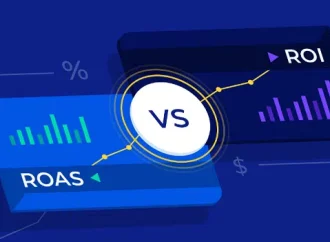When it comes to artificial intelligence, evolutionary computing is a relatively unknown but highly promising field. It is a powerful computational technique that uses the power of natural selection and mutation to solve complex problems, from designing robots to predicting the stock market. But how does this form of AI actually work? In this blog
When it comes to artificial intelligence, evolutionary computing is a relatively unknown but highly promising field. It is a powerful computational technique that uses the power of natural selection and mutation to solve complex problems, from designing robots to predicting the stock market. But how does this form of AI actually work? In this blog post we aim to demystify evolutionary computing and explore its potential applications for your business. You will learn about the different types of evolutionary algorithms, as well as how they can be used to automate tasks and generate insights that were previously thought impossible. Read on to discover the possibilities that exist when you unlock the mysteries of evolutionary computing.
What is evolutionary computing?
Evolutionary computing is a branch of artificial intelligence that deals with the design and development of algorithms that are inspired by the principles of natural selection and evolution. The main aim of evolutionary computing is to generate solutions to problems that are difficult or impossible to solve using traditional methods.
The most common type of evolutionary algorithm is the Genetic Algorithm (GA), which was first developed by John Holland in the 1970s. GAs work by encoding potential solutions to a problem as strings of bits (called chromosomes). These strings are then subjected to a series of operations (called mutations and crossover) that mimic the process of natural selection. After several generations, the GA converges on a set of near-optimal solutions.
Other types of evolutionary algorithms include Evolutionary Strategies (ES), Evolutionary Programming (EP), and Genetic Programming (GP). These algorithms have been used to solve problems in a wide range of domains, including machine learning, optimization, and control theory.
Recent advances in evolutionary computation have been driven by the availability of more powerful computers and better understanding of the principles of natural selection. EC has also been used increasingly for commercial applications, such as product design, financial modeling, and resource allocation.
The history of evolutionary computing
The field of evolutionary computing has a long and varied history. Early attempts at using evolutionary algorithms were often limited by the computational resources available at the time. However, as technology has progressed, so too has the ability to harness the power of evolution for solving complex problems.
One of the earliest examples of evolutionary computing was used by British mathematician Alan Turing in his 1950 paper “Computing Machinery and Intelligence”. In this paper, Turing proposed using a genetically-based algorithm to simulate the process of natural selection in order to evolve intelligent behaviour in a machine. While this idea was not fully realized at the time, it laid the foundation for subsequent work in the field.
In the 1960s, American computer scientist John Holland began developing what would become known as genetic algorithms (GAs). GAs are a type of evolutionary algorithm that encodes potential solutions to a problem as strings of bits (genotypes) and then uses operators such as mutation and crossover to generate new solutions (phenotypes). Holland’s GA research resulted in some early successes, including the development of an automated design system for microchips.
Since then, evolutionary algorithms have been used for a wide variety of applications, including image recognition, data mining, stock market prediction, and even aircraft design. As computers continue to get more powerful and our understanding of evolution grows, it is likely that we will see even more amazing feats accomplished through evolutionary computing in the years to come.
How evolutionary computing works
In a previous article, we introduced the concept of evolutionary computing and how it can be used to solve complex problems. In this article, we will take a more in-depth look at how evolutionary computing works.
At its core, evolutionary computing is a problem-solving method that mimics the natural process of evolution. Evolutionary computing algorithms start with a population of potential solutions (called chromosomes or individuals) and then apply operators (such as mutation, crossover, and selection) to generate new generations of solutions. The goal is to find the fittest solution (i.e., the one that best solves the problem at hand).
There are three main types of evolutionary algorithms:
1. Genetic algorithms
2. Evolutionary strategies
3. Evolutionary programming
Each type of algorithm has its own strengths and weaknesses, but all three share some common features. For example, all three types of algorithms use a population of potential solutions (individuals), apply operators to generate new generations of solutions, and seek to find the fittest solution.
The most important thing to remember about evolutionary computing is that it is a stochastic process—that is, it relies on chance to explore the search space and find good solutions. This means that there is no guarantee that an evolutionary algorithm will find the best possible solution to a given problem; however, it can often find very good solutions quickly and with relatively little effort on the part of the user.
The benefits of evolutionary computing
There are many benefits of evolutionary computing, including the ability to solve complex problems, optimize processes, and find new solutions to difficult problems.
One of the key benefits of evolutionary computing is its ability to solve complex problems. By using a process of natural selection, evolutionary algorithms can find new and better solutions to difficult problems. Additionally, evolutionary computing can be used to optimize processes. For example, by evolving a population of potential solutions, an evolutionary algorithm can find the best solution for a given problem. Finally, evolutionary computing can be used to find new solutions to difficult problems. Often, traditional methods of solving problems fail when faced with a novel or difficult problem. However, by using the principles of evolution, computational methods can sometimes find new and better solutions.
The challenges of evolutionary computing
As with any new technology, there are always challenges that need to be overcome. Evolutionary computing is no different. One of the main challenges is the amount of time it can take to generate results. This can be due to the size and complexity of the problem, as well as the number of generations needed to reach a solution.
Another challenge is that of getting accurate results. This can be difficult because the algorithms used in evolutionary computing are stochastic in nature, meaning they rely on randomness to create new solutions. This means that it can be difficult to reproduce results, which can make it hard to verify findings.
Finally, another challenge faced by evolutionary computing is that of scalability. As problems get larger and more complex, it becomes more difficult for evolutionary algorithms to find solutions in a reasonable amount of time. This can limit the usefulness of this technology for some real-world applications.
The future of evolutionary computing
As digital technologies continue to evolve and become more sophisticated, businesses are increasingly turning to evolutionary computing to help them solve complex problems. Evolutionary computing is a branch of artificial intelligence that uses Darwinian principles of natural selection to create algorithms that can adapt and improve over time.
One of the most exciting things about evolutionary computing is its potential to help businesses automate the process of innovation. rather than relying on human trial-and-error to find new solutions, businesses can use evolutionary algorithms to explore a much wider space of possible solutions and quickly identify the best ones. This could allow businesses to stay one step ahead of their competitors by constantly evolving their products and processes.
Of course, evolutionary computing is still in its early stages, and there are many challenges that need to be addressed before it can truly live up to its potential. But as the technology continues to develop, it could transform the way businesses operate, giving them a powerful new tool for driving innovation and growth.
Conclusion
Evolutionary computing is an ever-evolving technology that can make it easy for businesses to optimize their operations and processes. By leveraging the power of AI, evolutionary computing provides organizations with a powerful tool to tackle complex tasks while minimizing resources. With so many potential applications, this technology can be used in almost any industry as a means to drive innovation, efficiency, and cost savings. If your organization is looking for ways to move ahead of its competitors or enhance customer experience, evolutionary computing could be well worth exploring.





















Leave a Comment
Your email address will not be published. Required fields are marked with *